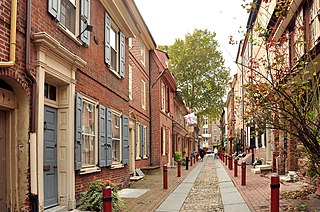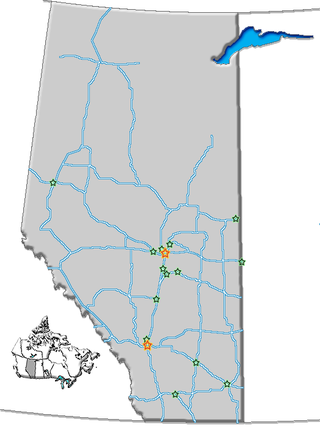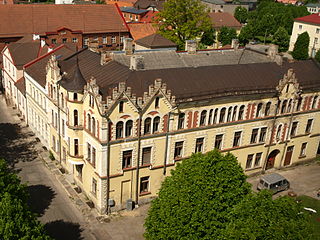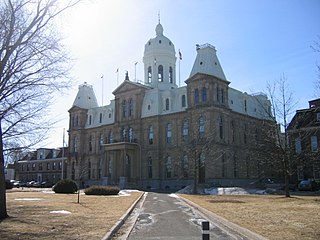
National Historic Sites of Canada are places that have been designated by the federal Minister of the Environment on the advice of the Historic Sites and Monuments Board of Canada (HSMBC), as being of national historic significance. Parks Canada, a federal agency, manages the National Historic Sites program. As of July 2023, there were 1,004 National Historic Sites, 171 of which are administered by Parks Canada; the remainder are administered or owned by other levels of government or private entities. The sites are located across all ten provinces and three territories, with two sites located in France.
The Southern Alberta Institute of Technology (SAIT) is a polytechnic institute in Calgary, Alberta, Canada. SAIT offers more than 110 career programs in technology, trades and business. Established in 1916, it is Calgary's second oldest post-secondary institution and Canada's first publicly funded technical institute.

Historic preservation (US), built heritage preservation or built heritage conservation (UK) is an endeavor that seeks to preserve, conserve and protect buildings, objects, landscapes or other artifacts of historical significance. It is a philosophical concept that became popular in the twentieth century, which maintains that cities as products of centuries' development should be obligated to protect their patrimonial legacy. The term refers specifically to the preservation of the built environment, and not to preservation of, for example, primeval forests or wilderness.

The Ontario Heritage Act, first enacted on March 5, 1975, allows municipalities and the provincial government to designate individual properties and districts in the Canadian Province of Ontario, as being of cultural heritage value or interest.

The Canadian Register of Historic Places, also known as Canada's Historic Places, is an online directory of historic places in Canada which have been formally recognized for their heritage value by a federal, provincial, territorial or municipal authority.

Historic districts in the United States are designated historic districts recognizing a group of buildings, archaeological resources, or other properties as historically or architecturally significant. Buildings, structures, objects, and sites within a historic district are normally divided into two categories, contributing and non-contributing. Districts vary greatly in size and composition: a historic district could comprise an entire neighborhood with hundreds of buildings, or a smaller area with just one or a few resources.

Provincial historic sites of Alberta are museums and historic sites run by the Government of Alberta.
Heritage buildings in Edmonton, as elsewhere in Canada, may be designated by any of the three levels of government: the Government of Canada, the Government of Alberta, or the City of Edmonton.

A historic district or heritage district is a section of a city which contains older buildings considered valuable for historical or architectural reasons. In some countries or jurisdictions, historic districts receive legal protection from certain types of development.

Lougheed House, or as it was originally known Beaulieu, is a National Historic Site located in the Beltline district of Calgary, Alberta. Originally constructed in 1891 as a home for Senator James Alexander Lougheed KCMG PC KC and his wife Isabella Clarke Hardisty, the structure has since become an iconic heritage building in Calgary. Lougheed House is operated by Lougheed House Conservation Society, an independent, non-profit society devoted to the restoration and public enjoyment of the historic house and its Gardens.
Heritage Montreal is a Canadian non-profit organization dedicated to protecting the architectural, historic, natural, and cultural heritage of Greater Montreal. Architect Phyllis Lambert founded Heritage Montreal in 1975. It was preceded by Save Montreal, a volunteer group co-founded by Michael Fish after the controversial demolition of the Van Horne Mansion by developer David Azrieli in 1973. Heritage Montreal played a key role in efforts to halt demolition and redevelopment in the McGill Ghetto, also known as Milton Park.
The Quebec Cultural Heritage Directory is an online cultural heritage knowledge dissemination tool for the province of Quebec. The directory is maintained by the province's Ministry of Culture and Communications.

The Heritage Railway Stations Protection Act is an act of the Parliament of Canada. The Act was enacted in 1988 in response to a long-standing and widespread concern that Canada’s heritage railway stations were not being protected. Bill C-205, An Act to protect heritage railway stations, was proposed by MP Gordon Taylor in a private member's bill which received support of all parties in the House of Commons.

The Heritage Conservation Act is a provincial statute which allows for the preservation of cultural heritage properties and areas in the province of New Brunswick, Canada.

The Heritage Property Act is a provincial statute which allows for the preservation of cultural heritage properties, archaeological sites and palaeontological sites in the province of Saskatchewan, Canada.

Calgary City Hall, is the seat of government for Calgary City Council, located in the city's downtown core of Calgary, Alberta, Canada. The historic building completed in 1911 serves as the offices for Calgary City Council, consisting of the office of the Mayor, fourteen Councillors and municipal Clerk. Calgary City Hall originally housed the municipal council and portions of administration from its completion in 1911 until the construction of the Calgary Municipal Building adjacent to Old City Hall in 1985, which currently houses the offices of 2,000 civic administrators.
Christina Cameron, is a Canadian scientific writer, a former public servant and, from 2005 to 2019, a professor of Heritage conservation and World Heritage. Cameron has been awarded the prestigious Public Service Outstanding Achievement Award, inducted as a Fellow into the Royal Society of Canada, was the 2014 recipient of the National Trust for Canada's Gabrielle Léger Medal for Lifetime Achievement, and was appointed to the Order of Canada in 2014. In 2018 she was awarded the Gérard-Morisset Prix du Québec. One of her former superiors, a chief executive officer of Parks Canada, said that she was "unquestionably the great lady of Canada's cultural heritage."

The Sillery Heritage Site is an area containing historic residences and institutional properties located in the Sainte-Foy–Sillery–Cap-Rouge borough of Quebec City, Quebec, Canada. It was the first of 13 declared heritage sites of the Province of Quebec, and is among the four of which are located in Quebec City. Having been called the "cradle of the French Canadian nation," the heritage site includes approximately 350 buildings along 3.5 kilometres of the Saint Lawrence River shoreline. The Sillery Heritage Site includes buildings constructed during every major period of Quebec's history, dating back to the time of New France.













